Grandview, Texas history, landmarks, settlers, historic cemeteries, photos & travel. (original) (raw)
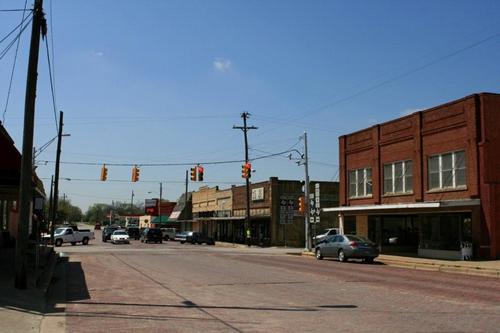
History in a Pecan Shell
The town had its beginning with the opening J.F. Scurlock�s general store in the 1850s. Just before the Civil War the town was platted and a Masonic Lodge/ school building was completed in December of 1860.
Construction of a mill bolstered the community and in 1882 the railroad arrived � sort of. It came within two miles of the then-established two and residents and businesses migrated to the rails.
By 1890 the population past the 500-mark, and grew to 700 in the first years of the 20th Century. A devastating fire hit the town in 1920, destroying most of the town�s businesses and 100 homes. The population was over 1,000 in the mid-1920s. In the late 1980s it was a reported 1,201 residents which grew to 1,358 by 2000.

Historical marker (206 Crier Street, Grandview):
Town of Grandview
(Original Site One Mile Northwest)
Settled in 1850 on land grant from Governor Elisha M. Pease.
Supplies were hauled by ox wagon from Houston. A visitor exclaimed, "What a grand view!" which gave community its name.
Church organized 1853. Post office opened in 1856. Masonic lodge (county's first) founded 1860. Town moved to this site, on Missouri-Kansas-Texas rail line, in 1883. Incorporated in 1891. Home of Grand View Collegiate Institute 1897-1907.
Devastating 1920 fire razed 135 homes, schools, churches, and businesses. Town name changed to Grandview (one word) in 1925.
(1970)
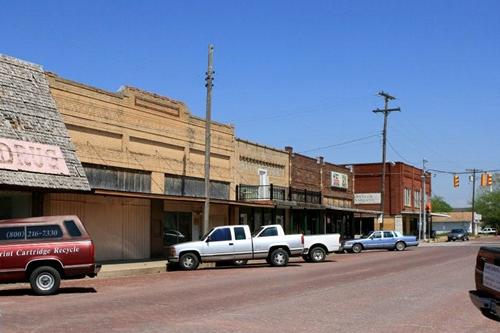

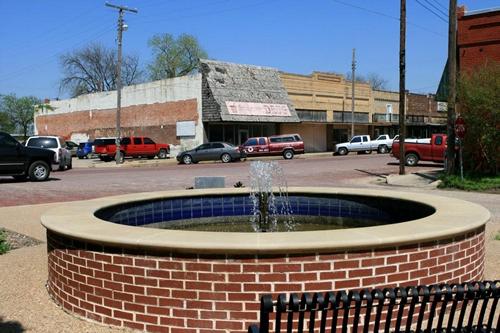
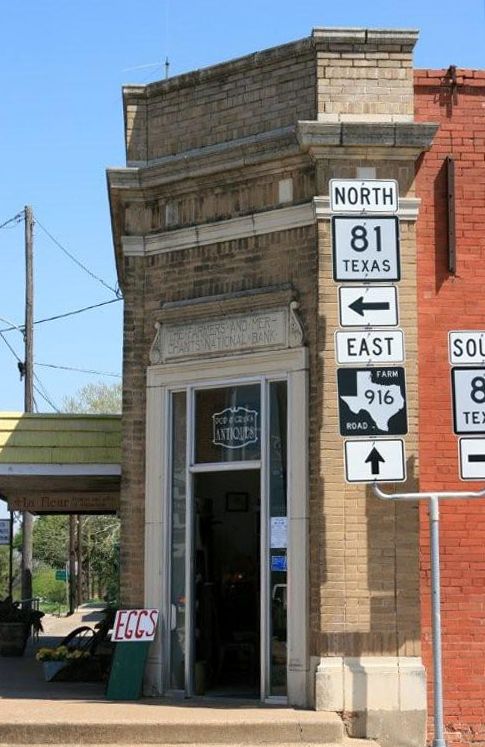


Grandview Cemeteries
Historical marker (Grandview - FM 4, E of CR 401):
Grandview Cemetery and Original Grand View Town Site
John Whitmire, the son-in-law of early settler F. L. Kirtley, is credited with naming this town in 1854 by saying, "What a Grand View!"
Kirtley donated 2.5 acres for a Baptist church and cemetery in 1856. Intending to lay out a town plat, James F. Scurlock purchased about 1400 acres of land surrounding the cemetery the same year. The oldest marked burial here is that of James F. and Rebecca Criner Scurlock's child, James C., who was born and died on June 4, 1857.
By 1860 Grand View included three general stores, a blacksmith shop, a church building and Lodge No. 266, A.F & A.M., chartered in 1861 as the first Masonic lodge in Johnson County. After James Scurlock's death during the Civil War, his family sold the town site to F. M. Sansom. Several stores, a saloon, and more churches were established as the community grew.
Of the many graves in the cemetery, one has taken on the status of local legend. A pair of young travelers came to Grand View one evening in summer 1867. The young woman was found murdered the next morning with no sign of her companion. The people of the community buried her in a handmade coffin and marked her tombstone "Annie," the name on an embroidered handkerchief she carried.
The African American section of the cemetery contains the graves of many residents, including the unmarked graves of Scott and Elmira Matlock. They were among Grand View's earliest settlers.
The railroad came through about a mile southeast of the town in 1881, and by 1883 the main section of Grand View had moved to it. The cemetery gradually took over the entire old town site. The cemetery continued to serve the community, now known by the single word "Grandview." The cemetery and the original town site remain as a chronicle of the pioneers of Johnson County.
(1999)

Wilkinson Family Cemetery Historical Marker
Photo courtesy Jen Basham, March 2018
Historical marker
(From Grandview US 81 N 4 miles, then county road E .75 mile):
Wilkinson Family Cemetery
Henry and Sarah Ann (Weldon) Wilkinson and their seven children left their former home in Mississippi in November 1866 to travel to Texas. Their journey in two ox-drawn wagons lasted 62 days, and they settled near this site in January 1867.
The family rented land upon their arrival, and in 1869 purchased 762 acres on which they established a farm. They built a small log home and became respected leaders in their small rural community, initially named Hugh in honor of a Wilkinson grandson. The community's name later was changed to Antioch.
Henry Wilkinson died on May 26, 1879, as a result of a farming accident. He was buried near his home in a grove of trees which became known as the Wilkinson Family Cemetery. His wife Sarah Ann (d. 1901) and sons John Q. A. (d. 1879) and Virgil A. (d. 1881) also were buried in the family graveyard, as were a number of other relatives and descendants.
The land surrounding the cemetery remained in the Wilkinson family until 1938. The half-acre site is maintained by Wilkinson descendants, many of whom still reside in this area of Johnson County.
(1992)
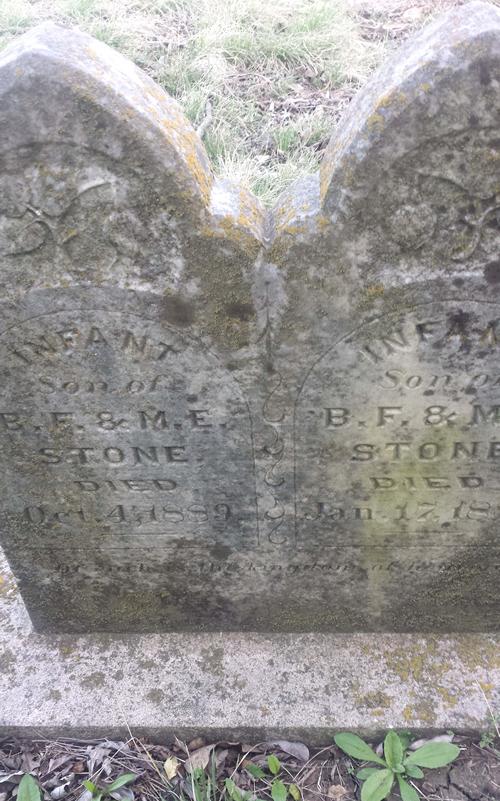
Wilkinson Family Cemetery infant tombstone
Photo courtesyJen Basham, March 2018
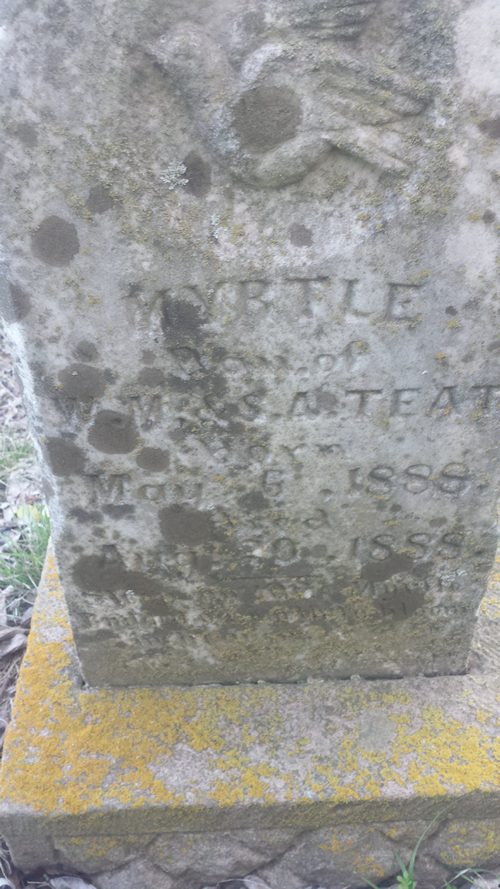
Wilkinson Family Cemetery infant tombstone
Photo courtesy Jen Basham, March 2018
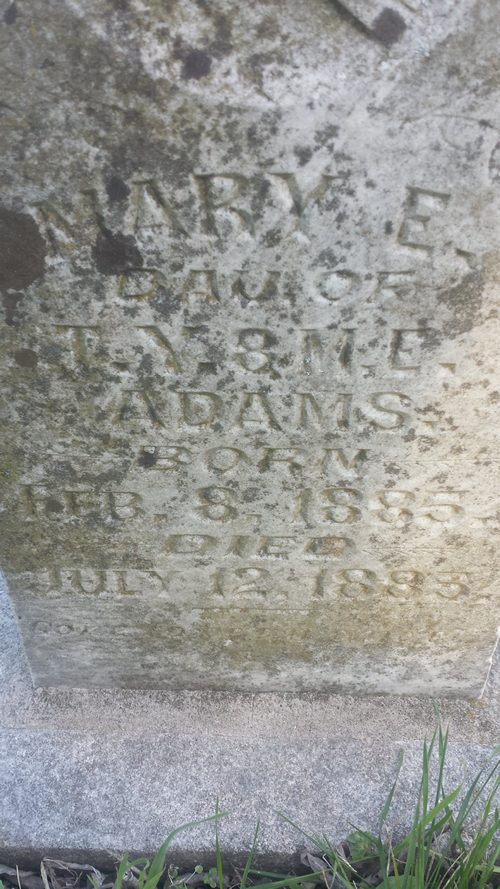
Wilkinson Family Cemetery infant tombstone
Photo courtesy Jen Basham, March 2018
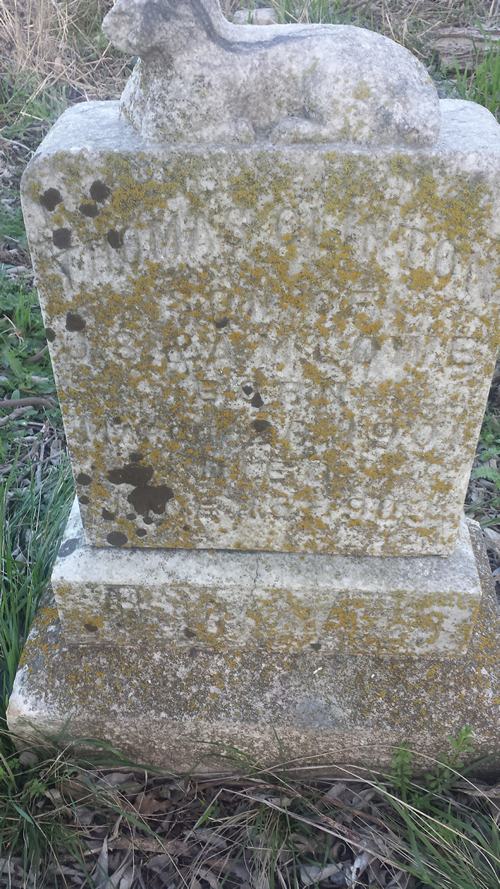
Wilkinson Family Cemetery tombstone
Photo courtesy Jen Basham, March 2018
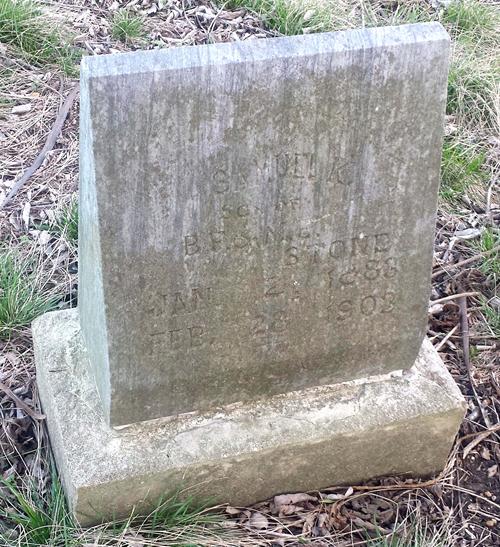
Wilkinson Family Cemetery tombstone
Photo courtesy Jen Basham, March 2018
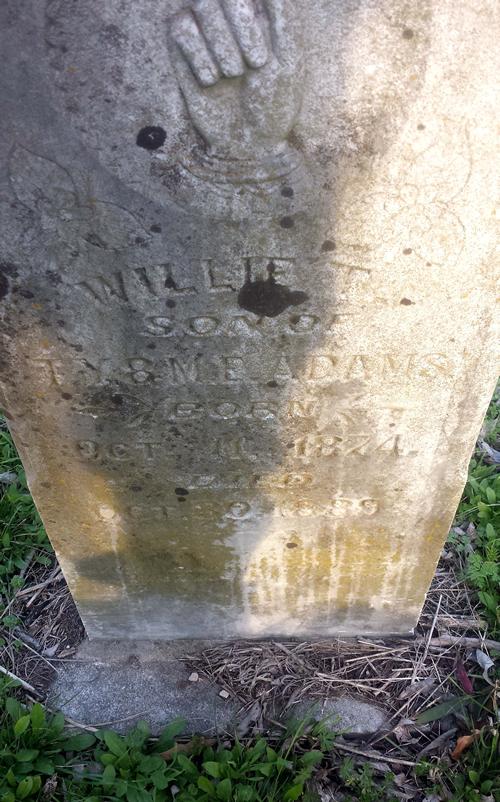
Wilkinson Family Cemetery tombstone
Photo courtesy Jen Basham, March 2018
Texas Escapes, in its purpose to preserve historic, endangered and vanishing Texas, asks that anyone wishing to share their local history, stories, landmarks and vintage/historic photos, please contact us.